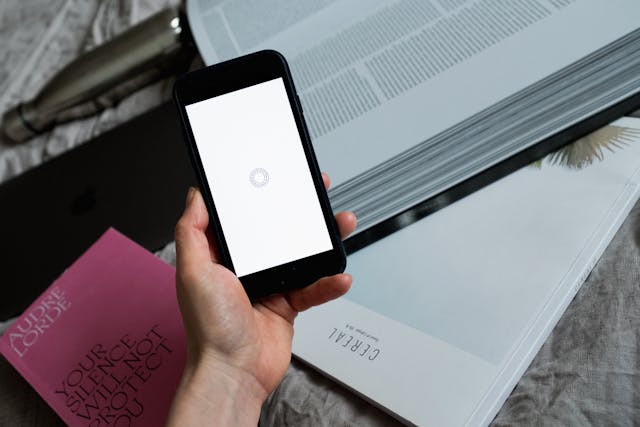A slow, frustrating website pushes visitors away within seconds. No one wants to struggle with broken links, unreadable text, or intrusive pop-ups. If a site makes that difficult, they won’t stick around. Search engines also notice these issues, lowering rankings and making it even more challenging to attract traffic. The worst part? Many businesses don’t realize how much damage these issues cause. They focus on colors, fonts, and graphics but overlook usability. Fixing mistakes isn’t just about making a website look good—it’s about keeping visitors engaged and encouraging them to take action. This guide covers the most damaging mistakes and how to avoid them. Web design mistakes that harm user experience can be costly, but the good news is that they are fixable. So, let’s uncover what’s driving visitors away and how to fix it.
Cluttered and Overwhelming Layout
A cluttered website feels chaotic and uninviting—it’s hard to focus and quickly builds frustration. Too many images, buttons, and text blocks create chaos, making it impossible for visitors to find what they need. Instead of guiding them toward valuable content, a disorganized layout drives them away. A confusing structure forces people to search for information that should be easy to access. Poor spacing and the lack of whitespace make things even worse.
How to fix it:
- Reduce visual overload. Keep only necessary elements on each page.
- Use whitespace effectively. Give content room to breathe.
- Structure content properly. Use headings, bullet points, and short paragraphs.
- Make navigation simple. Organize menus clearly with logical categories.
A well-structured website helps visitors find what they need without frustration.
Slow Loading Speed Hurts Engagement
Website speed plays a critical role in user experience, and a slow-loading site can drive visitors away before they even see your content. In truth, if a page takes more than three seconds to load, users will likely abandon it, leading to higher bounce rates and lower conversions. Factors such as unoptimized images, excessive scripts, and unreliable hosting can significantly slow down your website, frustrating users and diminishing trust in your brand.
Therefore, to keep users on your site and encourage interaction, you must take steps to increase your page loading speed and ensure a seamless browsing experience. A fast-loading website keeps users engaged, reduces bounce rates, and encourages them to explore more of your content. Here’s how to optimize performance:
- Optimize Images – Compress image files without losing quality to reduce load times.
- Leverage Caching – Store frequently accessed data locally to decrease server requests.
- Minify Code – Simplify CSS, JavaScript, and HTML by removing unnecessary characters and spaces.
- Select High-Performance Hosting – Choose a reliable provider with high uptime and fast server response times.
- Reduce Plugin Overload – Use only essential plugins to prevent excessive resource consumption.
- Utilize a Content Delivery Network (CDN) – Distribute your site’s content across multiple servers to minimize latency and ensure faster load times for users worldwide.
By making these improvements, your website will load more quickly, fostering a seamless experience that keeps visitors engaged and improves overall site performance.

Poor Mobile Responsiveness Chases Users Away
More people browse on their phones than on computers, yet many websites still fail to adapt. A site that isn’t mobile-friendly forces users to pinch, zoom, and struggle with navigation, making it harder for businesses to retain customers. Search engines also rank mobile-friendly sites higher, meaning an unresponsive design can hurt visibility.
How to fix it:
- Use responsive design. Ensure layouts adjust automatically to different screen sizes.
- Test across devices. Check performance on various smartphones and tablets.
- Adjust elements for touch. Make buttons large enough and space them properly.
- Optimize images and media. Prevent slow load times by reducing file sizes.
Weak or Missing Call-to-Actions (CTAs) Reduce Conversions
A website without clear instructions leaves visitors unsure of what to do next. If a call-to-action (CTA) is weak, unclear, or missing, users are likelier to leave without engaging. Buttons labeled “Click Here” or “Learn More” don’t create urgency or tell visitors what they will gain. Strong CTAs should be persuasive and specific. A well-crafted message guides users toward action, whether signing up, purchasing or requesting information.
How to fix it:
- Use clear and direct wording: Phrases like “Get Your Free Trial” or “Download Now” work better than vague instructions.
- Make CTAs stand out: Use contrasting colors and readable fonts.
- Place them strategically: Position CTAs near important content or at the end of a section.
- Limit choices. Too many options create confusion, leading to no action.
Weak buttons and unclear instructions lead to lost opportunities, while strong CTA encourages action.

Web Design Mistakes That Harm User Experience: Poor Readability
A study by the Baymard Institute found that 88% of online consumers are less likely to return to a site after a bad user experience. That underscores the critical importance of readability in web design. Tiny fonts force users to squint, while low contrast between text and background strains the eyes. Additionally, overly long paragraphs can cause visitors to lose interest before finishing reading. Although decorative fonts may appear creative, they often reduce readability. Poor typography and formatting are other common web design mistakes that harm user experience, leading visitors to leave before engaging with the content.
How to fix it:
- Choose easy-to-read fonts. Stick to simple, clean typefaces that work well on all screens.
- Use proper font sizes. The text should be large enough to read without zooming.
- Improve contrast. Dark text on a light background works best.
- Break up long paragraphs. Short sentences and clear spacing improve readability.
- Adjust line spacing. Proper spacing makes reading more comfortable.
Auto-Playing Media Annoys Visitors
Few things are more frustrating than opening a website and being blasted with unexpected sounds. Whether video, background music, or an ad, auto-playing media disrupts the user experience. Visitors often scramble to find the mute button or close the page entirely. Websites should respect user choice and not force unwanted audio or video. Visitors should decide when to start playback if they want to watch or listen.
How to fix it:
- Make media optional. Let users press play instead of starting automatically.
- Mute videos by default. If autoplay is necessary, ensure the sound is off.
- Provide clear controls. Users should easily pause or stop any media.
- Keep user preferences in mind. A website should enhance the experience, not interrupt it.
Inconsistent Design Lowers Trust
A website should feel unified from start to finish. Mismatched fonts, clashing colors, and inconsistent layouts confuse visitors and make a site look unprofessional. If every page follows a different style, users may question the reliability of the business. People expect a website to have a clear structure, and sudden design changes create doubt. A strong visual identity builds trust, while a disorganized look does the opposite.
How to fix it:
- Use a consistent color scheme. Stick to a defined palette across all pages.
- Choose a uniform font style. Avoid switching between multiple typefaces.
- Maintain a structured layout. Keep spacing, margins, and alignments the same.
- Standardize button styles. Interactive elements should look and function consistently.
- Create a design guide. A clear set of rules helps keep branding uniform.
A well-organized website looks professional.

A website should be easy to use, visually appealing, and built for a great user experience. Poor design choices drive visitors away, lowering engagement and reducing conversions. Web design mistakes that harm user experience make it harder for users to navigate, read content, or take action. On the other hand, fixing these issues improves trust and keeps visitors on the site longer. A clear layout, fast loading speed, and mobile-friendly design enhance the experience. With this in mind, start optimizing today. Small improvements can make a big difference in how users interact with your website.

